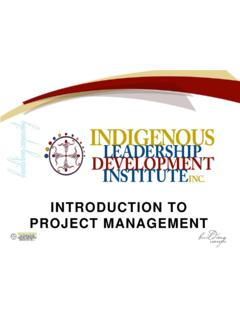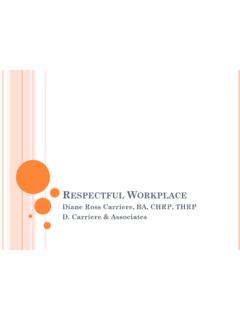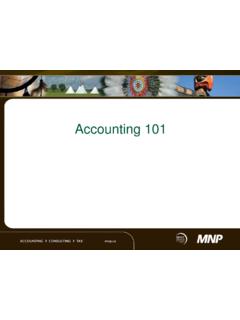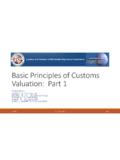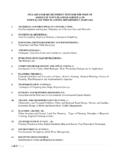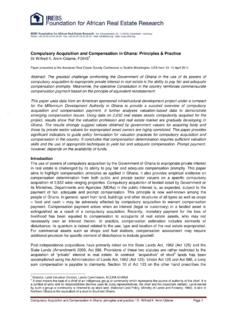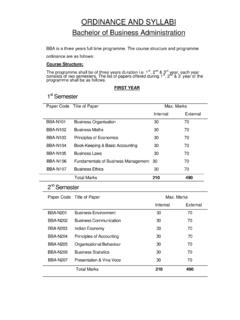Transcription of Daniel Bernard, CA, CBV J.P. Barnabé, CA
1 Business valuation A presentation for Manitoba Learning Match 2014. February 11, 2014. Daniel Bernard, CA, CBV. Barnab , CA. Overview When to get a valuation valuation Reports basic principles of valuation C. Common M. Methodologies th d l i Value Drivers and Detractors Goodwill Fair Market Value and Price Slide 2. Reasons for a valuation Buying/selling all or a partial interest of a business Mergers g Organizational recapitalization or restructuring Estate planning Financial reporting p g General information purposes Assist in settlement of shareholder disputes Corporate p or p partnership p dissolution Divorce Dissenting shareholder oppression suits Slide 3.
2 Levels of valuation Reports Calculation of Value Generally not suitable for litigation Used for preliminary assessment for litigation May be suitable for shareholder disputes depending on requirements of shareholder agreement Used commonly for estate planning, planning reorganizations, reorganizations and general information purposes Estimate of Value Suitable for litigation in most cases Used commonly when clients are looking for more assurance over the value Comprehensive p valuation Highest Level Suitable for any situation Slide 4. Basic Principals of valuation Value is prospective Value is determined at a p point in time Commercial vs.
3 Non-commercial goodwill Market drives the required rate of return Value is usuallyy driven byy earnings/cash g flows,, onlyy occasionallyy byy liquidation q value Higher the TAB, the lower the risk Minority interests usually worth less than ratable value Slide 5. Fair Market Value The highest Th hi h t price i available il bl iin an open and d unrestricted ti t d market between informed and prudent parties, acting at arm'ss length and under no compulsion to act arm act, expressed in terms of money or money's worth. Price Versus Fair Market Value The fair Th f i market k t value l off a business b i as determined d t i d iin a valuation report and the price the business could be sold for can be different Fair Market Value is the starting point and determined in a notional' market place Price P i is i the h endd result l Price is determined after exposure to the open market, negotiation between the parties.
4 Parties who are at transacting at arm's length Business valuation FMV and d price i iis d driven i b by P i is Price i d driven i b by Earnings/cash flow Consideration Multiple p Cash Specific to the company Vendor take back Previous transactions in the Contingent consideration industry Synergies (Net economic value added). Assets Benefits of synergies y g may y be Working capital shared Property plant and equipment Other factors Emotions Negotiating abilities Etc. Slide 8. Common Ways to Value a Company Three approaches to valuation 1. Asset based approach (real estate, earning not sufficient to support asset).
5 Liquidation value (orderly and forced). j Adjusted net book value adjusting j g tangible g assets/liabilities to FMV no goodwill . 2. Future based returns approach Capitalization of net earnings steady and predictable earnings Capitalization of cash flows (EBITDA). Discounted cash flows fluctuating earnings high growth 3. Market based approach Comparable transactions Slide 9. valuation Approaches Overview of valuation Approaches Is the Business Enterprise a viable entity? YES NO. Going Concern Approach Liquidation Approach Future Based Returns Asset-Based Methodology gy Approach Orderly vs.
6 Forced Market Approach Asset-Based Approach Slide 10. valuation Approaches and Methods Going Concern Approaches Going Concern Approach Income Market Asset Comparable p Capitalized Adjusted Net Public Earnings Book Value Companies Capitalized C it li d Comparable C bl Cash Flow Transactions Discounted Rules of Cash Flow Thumb Slide 11. Earnings/Cash Flow Based Method Overview The most commonly adopted earnings/cash flow based methods are: Capitalization of normalized net earnings;. p Capitalization of normalized after-tax discretionaryy net cash flow;;. Capitalization of normalized earnings before interest and income taxes (EBIT).
7 Capitalization of normalized earnings before interest, income taxes, depreciation and amortization (EBITDA); and Discounting of discretionary cash flows (DCF). Slide 12. Earnings/Cash Flow Based Method Selection of Method Capitalization of Earnings/Cash Flow Method Generally, the capitalization earnings/cash flow method is appropriate for: A mature business with relativelyy consistent earnings/cash g flow;;. A business where average earnings/cash flow can be reasonably estimated throughout a business cycle; and A business for which forecasts are not available or are not reliable.
8 Slide 13. Earnings/Cash Flow Based Method Selection of Method (continued). Maintainable Earnings/Cash Flow from Operations An estimate of maintainable (indicated) earnings requires the valuator to have an understanding of the relevant economic, industry and business factors and the historical, current and prospective financial position and operating results of the business. To determine maintainable earnings cash flow: Adjust historical earnings for a three to five-year period for any non-recurring amounts and reflect all transactions as if they had been at arm's length.
9 Length Some of these adjustments may include: Economic market salary adjustments (owner/manager Bonus out to keep S );. SBD);. Adjustments for non-recurring revenue and expense items;. Adjustments for non-arm's length transactions at uneconomic rates;. Slide 14. Earnings/Cash Flow Based Method Selection of Method (continued). Maintainable Earnings/Cash Flow from Operations (continued). Adjustments for revenues and expenses related to redundant assets (discussed below);. Leverage adjustments (if using equity earnings/cash flows);. Adjustments for non-recurring start-up costs; and Other issues several divisions operating under one corporation, economies of scale, etc.
10 Select maintainable earnings based on historical and expected trends. May also consider budget/forecast if available. Slide 15. Earnings/Cash Flow Based Method Selection of Method (continued). Discounted Cash Flow Method The DCF method is often applied in situations where: The business has a finite life;;. The business is forecast to experience change for a number of years before achieving a sustainable operating level; and Start-up company. The components of the DCF method are similar in many respects to those of the capitalization of discretionary cash flow method.
